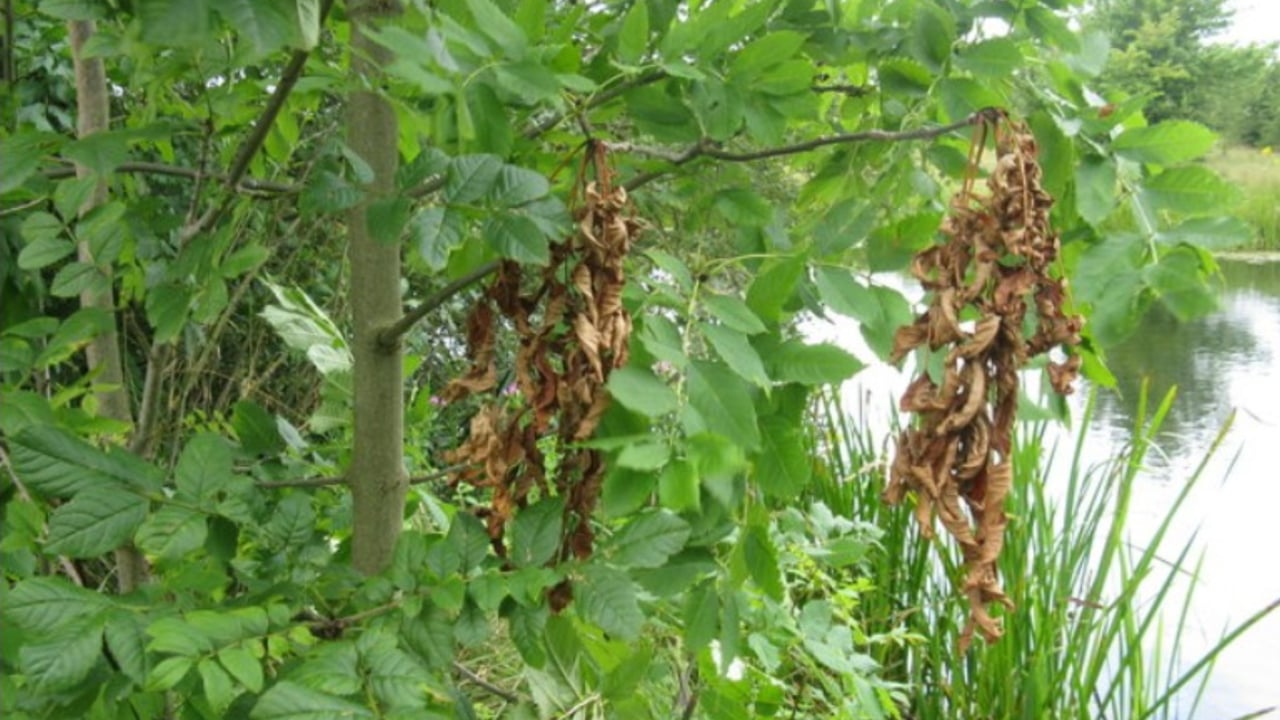Ash dieback: DAFM to review site clearance costs
The Department of Agriculture, Food and the Marine (DAFM) is to carry out a review of the site clearance costs for farmers impacted by ash dieback.
Members of the Ash Dieback Taskforce have provided the department with costs for clearing a number of sites of varying ages and sizes which have been impacted by the disease.
According to recently published minutes from the taskforce meeting held in early December, DAFM told members that there is currently "not the option to increase the site clearance grant".
The wide variability of costs was acknowledged relative to the €2,000 grant rate which is being offered.
Members told the meeting that the site clearance grant does not cover the costs of removal for "a significant number of forests".
The minutes note that they strongly believe that "dealing with site clearance costs is key to dealing with the ash dieback issue".
Members asked the department if the grant could be paid on the basis of invoiced costs or on the age or size of the forest with a different approach taken for smaller forests.
They also reiterated that the Independent Review Group recommended that "the cost of site clearance and regeneration should be borne by the State with any residual value from the timber remaining with the landowner".
The meeting was told of forestry owners who cannot engage a contractor to clear their forest, due to size and accessibility.
DAFM agreed to review the site clearance costs submitted by the members and explore whether it is possible to review the support offered.
The taskforce, led by DAFM, was among the recommendations of the Independent Review Group who examined the supports for farmers impacted by ash dieback.
Along with department officials, the taskforce has representatives from the Irish Timber Growers' Association (ITGA); the Limerick and Tipperary Woodland Owners (LTWO); Teagasc and the Irish Farmers' Association (IFA).
The membership also includes Forest Industries Ireland (FII); Irish Forest Owners (IFO) and the Social, Economic, and Environmental Forestry Association of Ireland (SEEFA).
According to the minutes of the December meeting, the department said that over 3,000ha have received payments through an ash dieback reconstitution scheme.
Last year, applications for the Reconstitution of Ash Dieback Scheme (RADS) 2023-2027 were submitted at an average rate of 60 per month.
The meeting also heard that will not now be possible to pay RADS and Climate Action Performance Payment Scheme (CAPP) applications on the gross area, rather than the treated area.
The department said a review of the relevant State aid guidelines "highlighted that this is not permitted".
Members noted that replanting grants offered through RADS are paid at the same rate as the Afforestation Scheme where a 15% biodiversity area is allowable.
They said that if this biodiversity area isn’t allowed for RADS the payment rates should be reviewed. The department agreed to examine the issue further.
DAFM will also continue to review whether the entirety of ash plots that include other broadleaves that will not be felled qualify for RADS and if not, what percentage of ash is acceptable.
The taskforce is due to hold its next meeting on Monday, March 3 in Tullamore, Co. Offaly.





